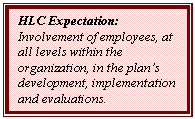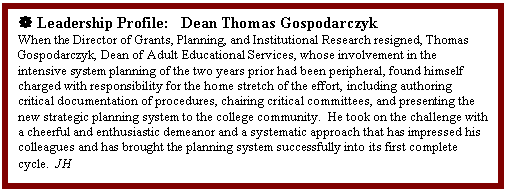Employee Involvement


Employee Involvement
 Involving staff in planning in meaningful
ways was a primary objective of all of the deliberations and
resulting actions. In-service and workshop days involved all staff
in common activities. Employees also participated within existing
committees, by responding to surveys, and as volunteers in response
to specific project needs. Although initial efforts were
administratively driven, great efforts were made to obtain broad
input from SVCC staff and to avoid another administratively
designed system. A number of efforts were taken to obtain employee
input
Involving staff in planning in meaningful
ways was a primary objective of all of the deliberations and
resulting actions. In-service and workshop days involved all staff
in common activities. Employees also participated within existing
committees, by responding to surveys, and as volunteers in response
to specific project needs. Although initial efforts were
administratively driven, great efforts were made to obtain broad
input from SVCC staff and to avoid another administratively
designed system. A number of efforts were taken to obtain employee
input ![]() :
:
- November/December 2003, an environmental scan examined student trends, departmental needs and organizational effectiveness in two parts. All staff were encouraged to attend one of several meetings to discuss these issues. Each meeting was facilitated by a different individual or pair of staff members. Employees were also asked to complete a written survey on the same topics.
- October 2004, an internal scan survey was conducted by the Internal Review Team as a part of the SWOT Analysis, which asked staff to identify the strengths and weaknesses of their respective departments and of the College. Departments were asked to respond to their respective weaknesses. The survey identified a number of College strengths and weaknesses and resulted in a communications survey that was administered in November.
- November 2004, a communications survey was administered to all
staff by the Internal Review Team, to probe the communication
weaknesses identified in the prior survey. The results were
considered by the Internal Review Team as a part of the SWOT
Analysis.

- August 2005, a staff survey was conducted as a follow-up to the fall 2004 surveys to determine if the strengths and weaknesses identified during the previous year had improved or deteriorated.








